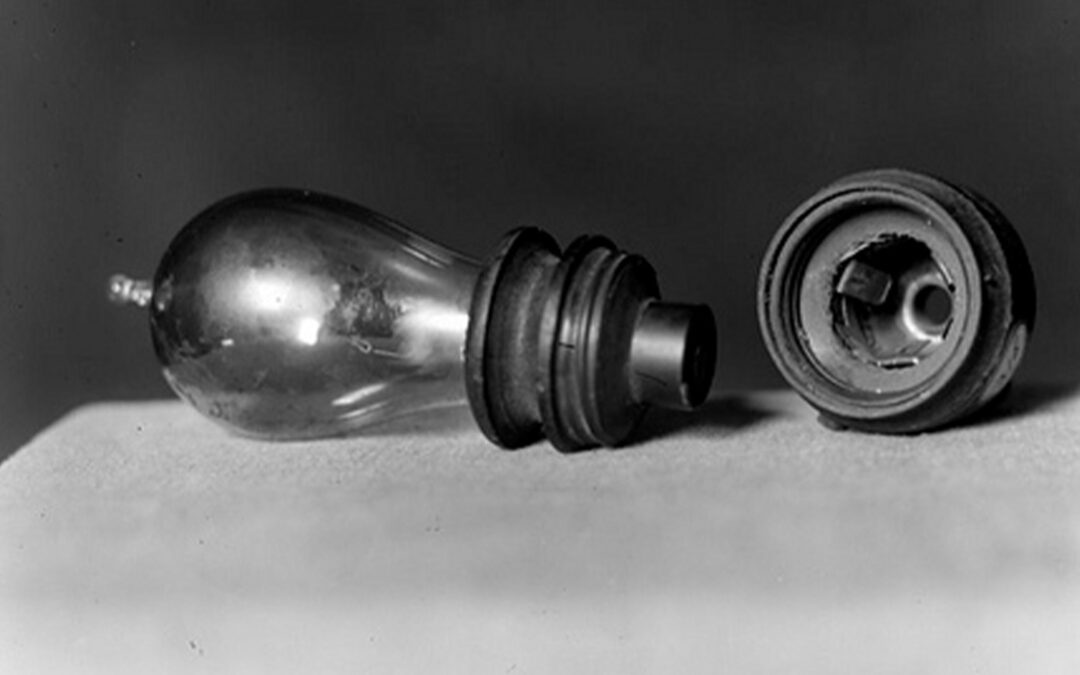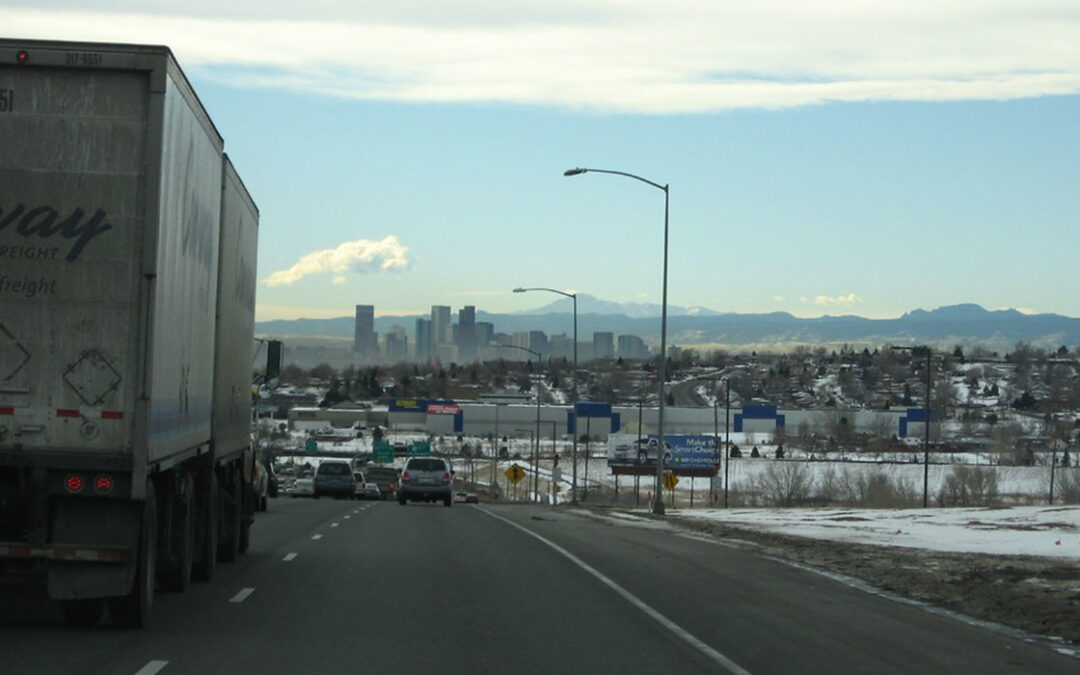
by Jennifer O'Connell | Mar 11, 2019 | Colorado, Personal Injury
Urban Avalanches: Colorado Passed Milestones
The clouds are rolling in and more of the powdery white stuff is on the way… snow, that is. This week may bring another 6” of snow to Denver, and this week’s storms are also bringing high winds of over 40 mph. Wind gusts are more dangerous to your commute than you might think. While no one loves driving in windy conditions that whip their car around, especially when passing a large truck or bus. Wind also sweeps snow onto the roadways, cooling and patting it down, creating icier conditions than snow alone. But the bigger issue in the news lately has been avalanche danger. Typically relegated to back country skiing, there have been numerous tragic avalanches across Colorado roadways this month.
In addition to the road closures, just this weekend, the Denver Post reported several injuries and one fatality related to “roof avalanches.”
Two men were working to create a safer environment for others in Crested Butte by clearing snow from a commercial building roof when they were trapped in a slide themselves. One was injured, while the other suffered fatal injuries. Avalanche warnings were seen this season for the first time just weeks ago, but have been continually expanded as snow reports continue. In today’s media, the word “historic” may seem cliché at best, but the avalanche dangers in our state are truly that. Colorado has already surpassed the last several record years for the number of avalanches, and is quickly approaching the heartbreaking records set for injuries and death.
Why are we seeing so many monster snow waves sweeping across our highways? According to the National Weather Service, we are in the midst of a perfect storm.
It’s not just anecdotal that the memes showing a tropical paradise on the sunny side of the street with an arctic freeze on the other side seem to accurately describe Colorado weather. And that is the perfect recipe for avalanche disasters. Simple avalanches are caused by high snowfall, usually in a rapid manner.
But the Colorado weather recipe of alternating cold to moderate temperatures destabilizes the layers of the fluffy stuff, causing a freeze-to-melt pattern made perfect for a slide.
The instability results in a snow break, which is marked by a separation of the unstable snow from more stable packed snow. This most commonly occurs within 24 hours of the snowfall because the overload of the new snow weakens the melt-to-freeze-to-melt layers beneath. When these conditions are combined with wind, further increases in temperature, and other natural conditions like lack of vegetation and slope steepness, you see the types of dangers we have been facing this month in Colorado. The weather forecasts this week are calling for a continuation of these perfect conditions. Heavy winds, rapid drops of large amounts of snow, coupled with temps that are forecast to fluctuate over 25 degrees in a single day — an avalanche’s delight. According to the Colorado Geography Survey’s Colorado Avalanche Information Center (CAIC), unstable snow pack can cause a slide of up to 200 mph of blasts able to destroy structures and trees. Even the blast of air that precedes the slide can be destructive in itself. In the past few weeks, many Colorado residents have found themselves being completely consumed in their vehicles by a rush of white.
The speeds of the avalanches and sheer force of the blasts are dangerous enough, but the post-slide conditions can further complicate the issue.
Multiple authority organizations, including CAIC, are recommending Coloradans avoid avalanche zones entirely until the weather evens out. However, it is not the Colorado way to avoid ski slopes with this much powder.
Here are extremely important safety tips we should all know so well they act like muscle memory in our minds:
1. If you are in your vehicle during a slide, snow your vehicle to a stop and shut off the engine. This first step is one of the most vital to survival. Don’t let vehicle fumes take you out long before the cold ever would. Stay in your vehicle until the authorities arrive. If not completely covered, your vehicle will protect you from the elements and keep you warmer. If completely submerged, the human body is denser than snow. You will not successfully climb from your vehicle to the top of the slide where you would access warmth and air. The snow will simply continue to pack around you. You will only sink deeper into the mound. Keep yourself in the warmth and safety of your vehicle until safety crews arrive. If stuck for a lengthy stay, you may want to open your windows slightly and use an ice scraper to hollow out some space for air.
2. If you are caught in a slide while shredding, point directly downhill to attempt to gain speed. If able, veer sharply left or right to escape the path. If unable, reach for a tree. This will aid in climbing out, creating air space, and possibly absorbing the bulk of the slide versus impacting your body. Hang on to any debris, as your body is denser and will sink faster than debris. While the avalanche is still moving, swim hard. Work to create air space as much as possible. Once the slide stops, the snow pack will settle in like concrete. You want to create as much body and air space as possible. If able, punch skyward to continue to create more breathing room for yourself.
Obviously, no skier or boarder should head into the danger zones without beacons and avalanche gear. And during high avalanche periods like we are seeing now, anyone driving through the mountains should also be equipped with survival gear. Make sure to pack blankets, water, shovels, and food in your vehicle. Make sure to keep your cell phone fully charged while driving in case of emergency, and carry an external battery. Have a first aid kit in case of minor injuries you can treat yourself and to mitigate the impact of major injuries until EMS arrives. Hand warmers will also be extremely helpful in case of being caught in your vehicle during a slide, so equipping your car with plenty of those can make a significant difference.
Colorado typically sees 4–5 fatalities annually from avalanches. We have neared, if not surpassed, that average already this year. Please take heed of these preparation and eventuality tips. Do not contribute to making 2019 a record-breaking year. For more questions and concerns, contact us.
Here are several links for further information and safety tips:
Colorado Geographical Survey — Colorado Avalanche Information
Farmers Almanac Winter Care Kit
National Geographic — Avalanches

by Jennifer O'Connell | Mar 8, 2019 | Colorado
The Governor’s “Electric Bills”
Governor Polis has hit the ground running with his new administration, and the House and Senate are in a flurry with new legislation. Oil and gas regulation, minimum wage, and cryptocurrencies have all been addressed in proposed and signed bills, but there are a few others being tossed around regarding electric vehicles. The Denver public has spoken its concern about footing the bill via their taxes for infrastructure supporting electric vehicle development. The Capitol has heard those concerns, and has offered a bill that doesn’t allocate tax money. Senate Bill 77 proposes to remove road blocks from the state laws as they currently stand, the result being that utility companies would be cleared to build charging ports from which they can earn income to recoup their costs and make a profit. All monies would come from payment by the user, not from tax subsidies and the like. This is a far cry from spending taxpayer dollars to increase infrastructure. The Denver Business Journal quoted Senator Angela Williams as saying, “This bill will support our state’s movement toward electric vehicles in a way that accommodates our business communities as well as our long-term environmental goals.”
SB 77 appears to be extremely popular and is a bi-partisan effort. In addition to SB 77, Governor Polis has signed an executive order requiring departments within the state government to cooperate on policies related to electric vehicle proliferation. This Order does involve tax dollars in that it requires CDOT to allocate funds to supporting electric vehicle infrastructure statewide. This Order’s goal is to solve the problem plaguing electric vehicle sales: owners have very few places to plug in.
But not all of these funds CDOT will be allocating to the measure are coming from the pockets of taxpayers. The recent settlements from auto-makers — punishment for falsifying or cheating emissions testing — have been earmarked as a large contribution to the Governor’s efforts. The Order confirms that these settlements in their entirety will go towards this effort, which eases the contribution from Colorado citizens.
The Order also includes major steps in Colorado’s role in attacking environmental issues. This first step is accomplished through a mandate that the Department of Public Health and Environment propose to the Colorado Air Quality Control Commission a minimum percentage law, requiring that a certain amount of vehicles sold in the state be zero-emissions. The Executive Order combined with SB 77 could work in conjunction to entice vehicle purchasers towards electric vehicles, especially when assured they will have ample places at which to charge. It is the goal of the Governor’s office to have roughly a million electric vehicles on Colorado roads by 2030. There still remains one barrier to purchasing in Colorado, however. Many Coloradans prefer SUVs, both out of necessity for winter safety and out of enjoyment for mountainous activities. Yet SUV’s have traditionally been ignored by alternative-fuel and electric vehicle manufacturing. There is hope on the horizon, though, with several auto-makers eyeing steps in the eco direction. There is even a Jeep Wrangler hitting the market with an alternative-energy component this year.
It remains to be seen whether these state measures will continue to add pressure to the industry to create more options for consumers — options they actually want to buy — but it appears the legislation is picking up steam and we may be looking at a future in Colorado that is certain to include electricity as the new gas. For more on issues affecting Colorado, see our other articles here or find out more about us here.

by Jennifer O'Connell | Mar 5, 2019 | Colorado
A Headache with Built-In Treatment Options
Starting June 1, 2019, running into 2022, eighteen miles of I-25 will go under construction… all at the same time. The Gap from Castle Rock to Monument is getting a face-lift, and the folks at CDOT have decided it best to tackle it in one fell swoop. This sounds like a nightmare to anyone and everyone, but especially so for those who travel that route daily on their commute into Denver for work. As its own form of virtual ibuprofen, I-25 My Way is being prescribed to the soon-to-be ailing commuters. I-25 My Way is a method of “transportation demand management,” offering alternative commutes to help alleviate congestion, treat safety due to pile-ups, and manage air pollution that inherently follows congested traffic, according to CDOT. in our opinion, they are getting quite creative.
There are three options with incentives being offered under the I-25 My Way program, all outlined on their site:
- Bustang
- Vanpool
- Carpool
For the Bustang option, incentives are being offered for round trip tickets through the Gap to DTC and Downtown Denver. The buses offer restrooms, wifi, and luggage racks to make riders feel like they are at home during the assuredly lengthy commute through the construction zone. Travelers can pull out their laptops, enjoy their coffee in their to-go cups, and make their own pit-stops along the way, which CDOT is touting as much better than simply sitting in their own cars, blocked from exits, and wasting time on the road. Vanpooling was the second alternative being offered under the incentive plan. It’s carpooling on an extra shot of espresso. Vanpooling is carpooling with a monthly fee, in which a group of commuters alternate driving a WayToGo van through the Gap. The vans are also wifi equipped, and customer support with either help you find a pool already going in your direction or coordinate your own pool. CDOT estimates vanpooling will save commuters up to $15,000/year, which we assume includes the increased gas costs of the lengthened construction-zone commute time, as well as vehicle wear-and-tear expenses.
Finally, the age-old carpool is listed by the agency as an “alternative method of commute.” While we have all been carpooling since our parents carted us around to tee ball and tumbling as kids, there are some new-age perks. Carpool participants can go to the website to track their trips and be entered to win raffle prizes offered regularly through the duration of the turmoil. I-25 My Way is also partnering with traffic’s favorite app, Waze Carpool, for $2 for 2 months. And on every 5th trip through the Gap, Waze carpoolers will receive rewards covering extra rides. While most of these incentive programs get riders through the Gap to Downtown Denver, and one Bustang incentive to DTC, many afflicted commuters will need transport past the Downtown area. These headache sufferers are being urged to contact I-25 May Way for help coordinating the additional journey.
So if you find yourself with a sudden onset migraine the size of an 18-mile gap in the interstate sometime around June 1 of this year, take two aspirin and meander around the I-25 My Way site to find which option allows you to best kick back and make the most of the time added to your trip. CDOT promises it will all be worth it in the end. For more from us, check out our website.

by Jennifer O'Connell | Feb 27, 2019 | Colorado
Trouble with Taxes? Buy an EV.
Governor Polis’s administration is pushing HB19–159 through the House, extending tax credits for electric vehicles, according to Judith Kohler of The Denver Post. The original bill, set to end in 2021, will presumably be extended to 2025.
There’s a credit for each vehicle size:
- Passenger Electric or Plug-in Hybrids — Starting at $5,000
- Light-to-Heavy-Duty Trucks — Starting between $7–20,000
- Leased Vehicles — $2,500
But act fast! The credits gradually decline over the term of the bill. The good news: all credits are in addition to the already existing federal tax credits ranging from $2,500 to $7,000. According to the Post, the administration’s goal is to reach one million electric vehicles on Colorado roads by 2030. The Colorado Electric Vehicle Plan projects that achieving that goal will serve to rid our skies of several hundred tons of smog-forming pollutants and 3 million tons of greenhouse gases. This initiative comes in conjunction with the move we previously outlined to allocate penalty funds from offending auto-makers like Fiat to the promotion of charging stations across our state, after the manufacturers were found to have been cheating the system with emissions-hiding devices. The hope is that by the time Coloradans make the switch to electric, the state’s infrastructure will be powered up and ready to go. Even before this push, by summer of 2018, the number of Coloradans driving electric-powered vehicles was already up 50% from the same time in 2017, according to the Post.
And Colorado already ranks seventh in the nation for the number of charging stations already available, says the National Renewable Energy Laboratory.
Auto-makers finally seem to be keeping up with the times, with multiple electric trucks hitting the lines, and Jeep’s new Wrangler that boasts an election for an electric motor in conjunction with a turbo-charged 2.0 liter four-cylinder. While one of Colorado’s most popular vehicles won’t be fully electric, the new motor will contribute to the effort as a starter and will make up 71 pound-feet of torque on acceleration, according to Tony Quiroga of Car and Driver. Our truck and SUV-loving state is awaiting the sale of many new EV’s, such as 2020 Rivian R1T, 2020 Volkswagen ID, 2019 Audi E-Tron, 2019 Kia Niro EV, Volvo’s all-electric XC40, and a few others in the luxury category. And as consumer demand increases, it is the hope that more affordable models begin rolling off the presses. Early EV-buyers may have to apply their tax credits to the sticker-prices of their new rides, but as manufacturing and infrastructure catch up to environmental demands, we may just meet the Polis Administration’s goals and play our part in combating greenhouse gases in the near future.
For more of our musings on issues that effect Coloradans, click here. For more about us, click here.

by Jennifer O'Connell | Feb 22, 2019 | Auto Accident, Colorado
I-25: Gridlock Defined
Ever driven on I-25? Then enough said. CDOT has heard our continuous gripes, as well as the stats on the horrific number of wrecks that happen at the 6th Avenue/Auraria interchange. Plans are being made to address the gridlock, and CDOT has requested that the community participate. Click here to participate in the survey regarding the project that is set to span from Santa Fe to 20th Street.
For more Colorado-related traffic and mobility concerns, check click here. And for more about how we can help, click here.

by Jennifer O'Connell | Feb 20, 2019 | Auto Accident, Colorado
In a War Between Hovercraft and Scooters, Who Wins?
Hovercraft, self-driving vehicles, autonomous buses — all modern innovations touted by the Tech Gods as the next greatest technology to hit our city streets. Just weeks ago, Tesla and other innovators debuted their versions of Jetsons-like vehicles in blue-print and digital formats at tech-gatherings across the world. And we’ve all seen YouTube videos of autonomous vehicle testing, or even experienced some of the early models on the road already. These forward-thinkers tout their devices as mechanisms of safety and traffic avoidance, as well as a mobility-method gentler to our Earth.
In fact, Denver was supposed to have its own test track for hovercraft, originally scheduled to open in 2018 by Arrivo.
Planned for just off of E-470, the testing facility was awarded $267,000 by the Colorado Office of Economic Development, according to an article published in the Denver Business Journal on February 19, 2019, but the company would only collect upon making good on their promise to bring 152 jobs to Commerce City. The company was unable to do so, and the project folded. The slow-roll of development, along with the generalized fear in the community of the safety of putting our lives in the proverbial hands of an unmanned machine or literal space-age technology just to get us to work and the grocery store, has had a major impact on the viability of these techie dreams. While the prophets of innovation are busy in their labs developing up-to-the-minute innovation, something much simpler and childhood-reminiscent has snuck into the hands of their target demographic and onto roads, sidewalks, and greenways alike.
“Micromobility” is now the name of the game.
Scooters and dockless-e-bikes are popping up like whack-a-moles on every city block in most major cities in the country. Consumers ranging from teens out for joyrides to executives escaping the gridlock morning commute are coasting alongside the rest of us still relegated to our gas-guzzlers and gas emitters. Much like the questions surrounding how to manage hover-craft safety, or even how they would be kept in their lane, the same seems to be going unanswered about the more micro methods already hitting our streets.
Denver is tackling these issues head on while simultaneously promoting the use of these alternate methods of work commuting.
At the beginning of this year, an ordinance went into effect in Denver City banning the use of scooters on sidewalks after an outcry from pedestrians who have had less than glowing reports of their shared sidewalk experiences. Additionally, the city has teamed up with B-Cycle to offer free memberships to the bike rental program in order to revitalize its use and encourage more traffic-goers to leave the ever-becoming outdated four-wheeled transport at home and take up the open-aired, two-wheeled transport. Denver is also combining its efforts to promote micro-mobility with other forms of public transit. Along with partnering with Panasonic to launch a driver-less bus to assist transit from Aurora to Denver International Airport, Denver is also working with Uber to incorporate RTD locations and schedules into its ride-share app to encourage Denverites to use Uber’s services as a gap-filler to the already existing light rail system. Denver is also making efforts to cooperate with Xcel Energy to add docking stations for electric vehicles around the city for a more energy efficient and climate-friendly commute.
All of these measures are aimed at attacking one of the most significant issues for Denver citizens, aka voters — traffic. The Denver Metro population has risen 30% in the last five years in the downtown area alone. Denver ranks 17th in the use of public transit for work commutes of major US cities. Transit commutes amount to only 6.8% for Denver workers, while 70.2% of Denver Metro residents drive alone to work. And only 2.3% of residents bike to work. Tesla and friends have suggested that hovering autos and self-driving vehicles will allow more space in the morning gridlock and more safety in high-traffic conditions. But their overall “alien” presentation to consumers combined with their molasses-like development have allowed for the swift promulgation of micro-mobility and alternatives to the old four-wheeled approach. And cities like Denver have received these substitutions with open arms. The more popular the current options become, the steeper the climb will be for innovators to launch profitable tech-commutes.
At the end of the day, we should always remain cognizant of what’s most important — safety of our community and the health of our world.
Whether scooters become more popular than hover-crafts or automated vehicles remain much more frightening than developers counted on, if these modernizations prove to protect us and our planet, we cannot be remiss in giving them due consideration. With an eye to the future, safety, and the global heartbeat, there are assuredly exciting days to come.






